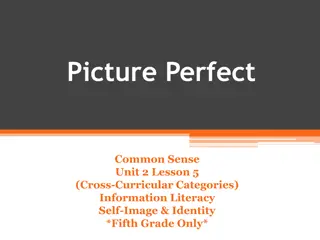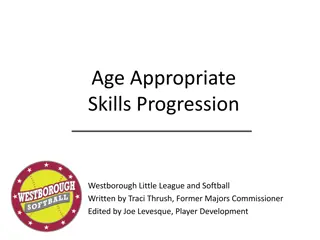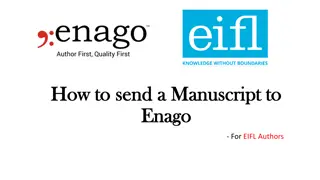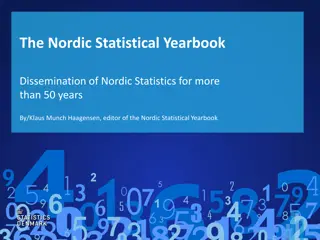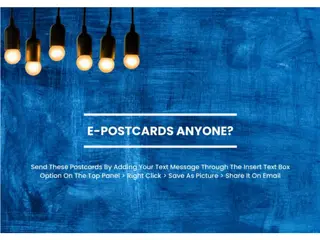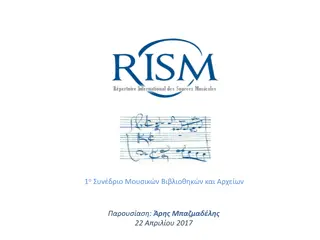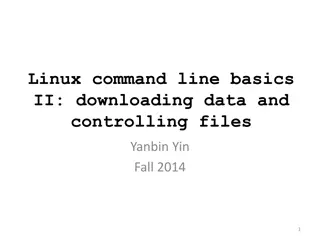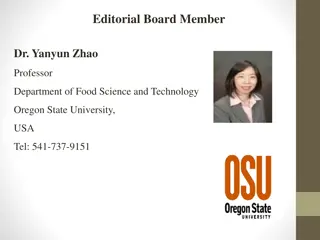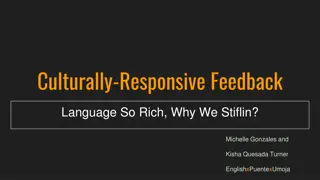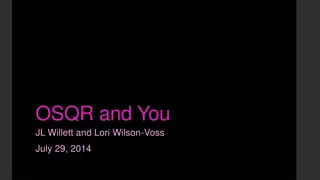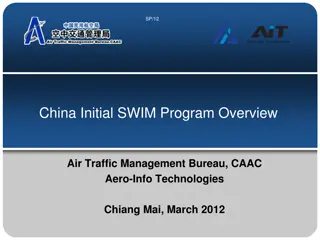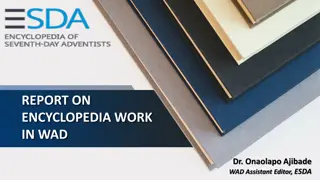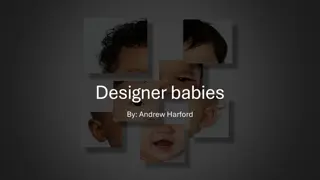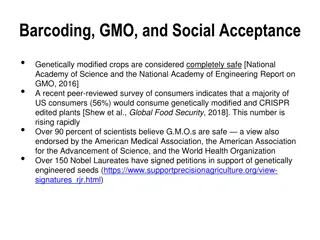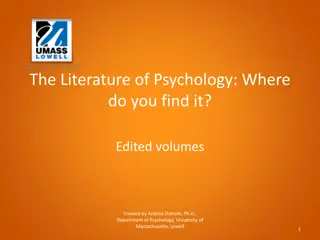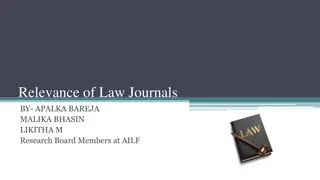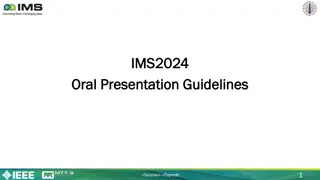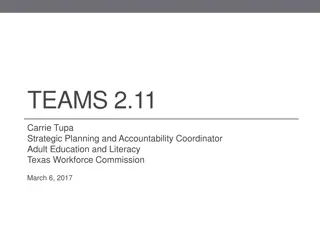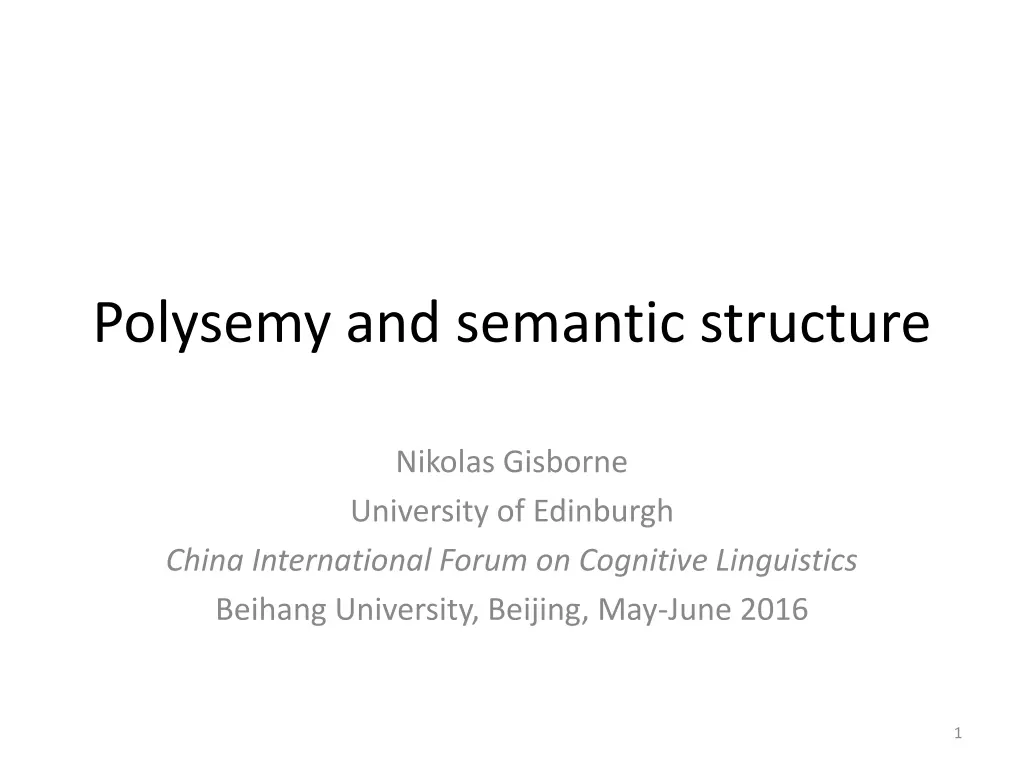
Understanding Polysemy and Homonymy
Explore the distinctions between polysemy and homonymy, how they relate to semantic structure, and their implications for word meanings in language. Gain insights into different types of polysemy and homonymy through examples and analyses from cognitive linguistics.
Download Presentation

Please find below an Image/Link to download the presentation.
The content on the website is provided AS IS for your information and personal use only. It may not be sold, licensed, or shared on other websites without obtaining consent from the author. If you encounter any issues during the download, it is possible that the publisher has removed the file from their server.
You are allowed to download the files provided on this website for personal or commercial use, subject to the condition that they are used lawfully. All files are the property of their respective owners.
The content on the website is provided AS IS for your information and personal use only. It may not be sold, licensed, or shared on other websites without obtaining consent from the author.
E N D
Presentation Transcript
Polysemy and semantic structure Nikolas Gisborne University of Edinburgh China International Forum on Cognitive Linguistics Beihang University, Beijing, May-June 2016 1
This lecture What can polysemy tell us about event complexity? What are the different kinds of polysemy? How should we diagnose polysemy? What are the representations for different kinds of polysemy in the WG network The claim: WG s approach permits a subtle approach to polysemy which captures a range of relevant phenomena. 2
Polysemy vs. homonymy Some research traditions distinguish polysemy from homonymy. Homonymy involves the distinction between BANK/river and BANK/money. Polysemy distinguishes between the two uses of BANK/money in (1) and (2). 1. My salary goes straight to the bank. 2. I tripped up right outside the bank. 3
Polysemy vs. homonymy In the first case, there is no obvious relationship between the two meanings of the word BANK. In the second case, there is a relationship: my pay goes to an institution, and I walk past a building. But the building houses (part of) the institution. So the definition of the building part of BANK s sense is related to the definition of the institution part. 4
Polysemy vs. homonymy In a sense this is like the structured polysemy which I said relates the two meanings of THINK in Lecture 1. It is claimed that polysemy is regular, unlike homonymy. If we have a word for an institution, then that word will also name the physical place for the institution. Or take WINDOW. 1. He looked through the window 2. The window was open 5
Polysemy vs. homonymy Homonymy on the other hand simply gives you sets of meanings, which are not related. Another issue is whether the two senses belong to the same, or to different lexemes. Does having different senses make BANK/money and BANK/river different lexemes? They are both nouns; they can have some of the same modifiers (a big bank, a bank in the city). 6
Polysemy vs. homonymy So what would distinguish them? In this case, we might want to say that BANK is a single lexeme, with a set of meanings, but where one of those meanings is associated with a larger network. I ll give an (incomplete) example in the next slide. On the other hand, DRIVE is both a noun and a verb, which have different meanings. This is an example of homophony: different lexemes happen to have (some of) the same realizations. 7
Polysemy vs. homonymy How good is the diagram as a way of capturing the facts we ve been looking at? First of all it is not helpful to understand the meaning of a lexeme as a set of concepts. Unfortunately, this is just what I did in Gisborne (2010). Why? Because the sense of BANK isn t a set of meanings. It is either meaning or or . We need a way of saying that the sense of BANK is one of the members of the set. 9
Polysemy vs. homonymy The set of meanings has two members, river bank and financial institution. The sense of BANK is an arbitrary member of a subset, which has a cardinality of 1, of this set of meanings. By the subset-of relation, the member of the subset must be token-identical with one or other of the meanings of the set of meanings. Hudson (2007:35) analyzes OR in a different way, using a relationship which looks like a choice function, but I cannot see a way of guaranteeing that the 3rd member necessary for OR does not add to the cardinality of the set, and is bound to one of the other two members. 11
Polysemy vs. homonymy But what about sublexemes? In Gisborne (2010), I handled the polysemy of SEE by having different sublexemes of SEE, which had a different part of the network which defined the prototypical sense. Sublexemes won t work in this case. This is because either financial institution or river bank would need to be the main sense of the lexeme, and then the sublexemes would need to override it. How do you decide which sense is basic? We could assume distinct lexemes, however. 12
The argument from homonymy When we first meet a homonym of a word that we already know, we don t treat it as a completely unfamiliar word because we do know its form, even though we don t know its meaning. For instance, if we already know the adjective ROUND (as in a round table), its form is already stored as a morph a form which is on a higher abstraction level than phonology; so when we hear Go round the corner, we recognise this form, but find that the expected meaning doesn t fit the context. As a result, when creating a new word- concept for the preposition ROUND we are not starting from scratch. All we have to do is to link the existing form to a new word. But that means that the existing form must be conceptually distinct from the word in other words, the morph {round} is different from the words that we might write as ROUNDadj and ROUNDprep. Wherever homonymy occurs, the same argument must apply: the normal processes of learning force us to start by recognising a familiar form, which we must then map onto a new word, thereby reinforcing a structural distinction between the two levels of morphology (for forms) and syntax (for words), both of which are different from phonology and semantics. (Hudson 2012: 11) 13
The argument from homonymy (Hudson 2012: 11) 14
Types of polysemy What matters in event structure is polysemy rather than homonymy: a situation where the sense are related. But here there are various approaches, and they do not necessarily converge on the same analysis or solutions. For example, Pustejovksy (1995) has a model which deals with a small handful of related meanings his qualia. But Peth (2001) distinguishes between regular and irregular polysemy. 15
Types of polysemy Peth argues that the kind of polysemy we see in the case of WINDOW is regular (amenable to analysis in terms of Pustejovksy s qualia). 1. I looked through the window 2. I threw it though the window But HEAD is irregular 3. This is a human head 4. She is my head of department 16
Types of polysemy It seems to me, though, that in the case of the polysemy of nouns the distinction is graded rather than clearly bounded, and that it might be better to look at the networks surrounding particular senses. But with verbs, it makes sense to talk about regular or structural polysemy. In many cases, the transitivity alternations we discussed in the previous lecture are related to structural polysemy, so we need a theory which can encompass them. 17
Structured polysemy The classic starting point is the relationship between causative verbs and their inchoative counterparts. This is a distinction between transitive and intransitive verbs. 1. Peter closed the door 2. The door closed In these examples, we see an additional element the Direct Object and an additional element in the meaning: the causative element. 18
Structured polysemy Other kinds of structured polysemy involve the differences between (1) and (2) 1. Jane sent Peter a present 2. Jane sent a present to Peter The first example entails that Peter has the present; the second does not. The first sentence cannot be continued with but he didn t get it; the second can. 19
Structured polysemy Examples of the first kind led Pustejovsky (1991) to argue for a syntax of events. Pustejovsky argues that it is necessary to have a discrete level of event structure, which is separate from what he calls Lexical-Conceptual Structure to be able to identify the syntax of events. Essentially, Pustejovsky says that there needs to be a level event structure as well as a level of semantic structure, and that event structure has patterns built in. 20
Pustejovsky (1991)s model Pustejovsky (1991: 58) 21
Pustejovsky (1991)s model Pustejovsky treats both achievements and accomplishments as Transitions. The other two elements in his event structures are processes and states. LCS is Lexical Conceptual Structure. LCS is a lexical semantic representation which takes the form of a predicate decomposition i.e. it is the elements that make up the LCS. Verb meanings are therefore built up out of more basic elements which compose them into complex LCS structures, which map onto a complex event structure. This gives us structural polysemy. 22
Rappaport Hovav and Levin Rappaport Hovav and Levin (1998) make a similar argument. They develop a model which tries to account for a range of different verb patterns. They are mainly concerned with intransitive and transitive verbs. Their model does not extend to ditransitive verbs or to verbs of buying and selling. But one of the things an event structure approach needs to do is to extend this far. 23
Rappaport Hovav and Levins model Model based around Aktionsarten. Each verb class corresponds to an aspectual category. Meaning is structured. There is a relationship between meanings of one kind and meanings of another: states are embedded within achievements. Achievements are embedded within accomplishments. 25
Rappaport Hovav and Levins model How does this model map onto simple argument taking facts? Transitive verbs He licked the ice-cream He walked the dog He made a cake licking is a simple event; walking the dog is a transitivized unergative verb; making a cake is a complex event involving a verb of creation. 26
And prepositions Adding prepositions to verbs can change their meanings as well. 1. He ran up the hill 2. He ran up a huge bill 3. He ran down the hill 4. The battery ran down The first two examples show that V+P combinations can be transparently compositional or idiomatic. These patterns tend to be more idiomatic than the combinations of other categories. The last two examples show that Ps are transitive & intransitive (more commonly involved in idiomatic patterns). 27
An alternative view It appears to me that the distinction between regular and irregular polysemy is unhelpful. It s an arbitrary distinction. Let s go back to RUN: I gave examples 1 and 3 earlier. 1. He ran up the hill 2. The train ran up the hill 3. The train ran along the new tracks 4. The program ran for 4 hours 5. He ran up a huge bill 28
An alternative view There is a metaphorical extension from an animate subject running up a hill to an inanimate subject. And again from a moving inanimate subject to an unmoving inanimate subject. The first is a generalization: running loses selection restrictions on its subject so that the subject of running can be anything that involves locomotion. The second though is not a generalization: it is a semantic shift from the running of an engine that moves to the running of something virtual a computer program. The last is idiomatic. 29
An alternative view Are any of these regular? Or irregular? If we return to the topic of yesterday s lecture, we ll see that the main evidence for structure in meaning comes from lexical aspect (aktionsart) and from a particular set of transitivity alternations. The argument from lexical aspect is that achievements and accomplishments are more complex have an internal structure than states and simple processes. 30
The main data sets The main event structure data sets for regular polysemy are: The causative inchoative alternation The ditransitive double complement alternation We talked about the causative inchoative alternation in an earlier lecture. This is the variation between Jane opened the door The door opened The causative embeds the inchoative within it. 31
The main data sets The next main data set is the ditransitive double complement construction. Jane gave Peter a cake Jane gave a cake to Peter Jane sent Peter a letter Jane sent a letter to Peter Jane baked Peter a cake Jane baked a cake for Peter There are clear semantic differences: it is not the case that the object is received by the recipient in the prepositional cases, although it is received in the double object cases. 32
Interim conclusions There are clearly some patterns which correspond to event complexity, and which look highly regular. But that does not make the less regular cases less interesting Nor does it require us to ignore non-regular examples that fit into otherwise regular patterns (the exceptional ditransitives) Our theory needs to be able to encompass all of these 33
The place of metaphor Jackendoff (1983) introduces Semantic Field Theory The idea is that verb meanings are organized around spatial meanings, and then that these spatial meanings can be elaborated to non- spatial semantic fields. We can see what Jackendoff means by looking at the verb GO. 34
GO 1. The car went from Edinburgh to Glasgow 2. The road goes from Edinburgh to Glasgow 3. The the lights went from green to red 4. The gun went [b g] The 1st example is simple motion The 2nd is metaphorical motion The 3rd is an extended metaphor What is the 4th? 35
Other kinds of metaphor Sweetser (1990) points out that cross- linguistically there are several different consistent metaphorical paths. For example, it is common for verbs of seeing to become verbs of understanding And it is common for verbs of hearing to become verbs of obeying We find these metaphorical paths commonly underlying several different grammaticalization paths cross-linguistically (Traugott and Dasher 2002) 36
Looking back over these data sets No need to privilege certain structural patterns. There is a range of different ways of extending a verb s meaning. Some of these include embedding a verb s meaning in a larger network (causativization of inchoatives). Others involve regular source target mapping Some involve collocations changing their meanings. And then what about the two kinds of causative verb (he walked the dog; he closed the door)? 37
On the other hand On the other hand, certain meaning structures recur in different places. The Resultative, for example, encodes the same semantic pattern as a causative verb in the causative inchoative alternation. But the verb CAUSE doesn t have a force-dynamic transfer (it s a raising to object verb) and so it doesn t have the same elements as causation within verb meanings (assuming my position on the ditransitive). 38
Section 2 THIS IS THE COFFEE BREAK! 39
A way to think about this The next few slides take us through some ideas from Gisborne (2010). I looked at the polysemy of SEE, and argued that there was a degree of semi-regularity in the senses that arise immediately around the physically seeing sense. I left the other metaphorical senses (I ll see you to the door, Jane s seeing Peter) aside. 40
The polysemy of SEE SEE can mean, in rough paraphrase, perceive visually ; understand ; date ; and escort . Jane saw the Taj Mahal I see what you mean. Jen is seeing Brad. Kim saw the salesman to the door. 41
The polysemy of SEE Alm-Arvius (1993) finds nine senses of SEE. (1) see1 perceive visually , perceive with the eyes , set (clap) eyes upon Ravina neither saw nor heard the boat approach. (2) see2 understand , realize , grasp , comprehend I don t see why playing the piano should be considered an intellectual pursuit. (3) see3 consider , judge , regard , view , think of He sees things differently now that he s joined the management. (4) see4 experience , go through You and I have certainly seen some good times together. 42
The polysemy of SEE (5) see5 find out , check , ascertain Let s see what s on the radio. Switch it on, will you. (6) see6 meet , visit , consult , receive This is the first time he s been to see us since he went blind. (7) see7 make sure , attend to , ensure , look after Don t worry about using up the rest of the food: the children will see to that. (8) see8 escort , accompany , go with I really should see you home, it s not safe to be out alone in this city after dark. (9) see9 take leave of , send off I wanted to come and see you off, he had told her, 43
Micropolysemy and SEE We saw the statue. We saw the statue move. She was pale the next day and he could see that she had not slept. Sarah turned to the bed to speak and saw, shockingly, that she was dead. Alm-Arvius (1993): all these examples involve the physical, visual perception sense. 44
Micropolysemy and SEE So do these examples, because the FROM or BY phrase gives the source of the information. I see from your news pages that feature films and past TV shows will soon be on the market for owners of video cassette recorders. and I see by the angle of the sun that the morning is almost ended. 45
Micropolysemy and SEE It s not good lexical semantics research to base your findings on what you feel the words mean. What about evidence? What linguistic evidence is there? Is this area of meaning really all about physical perception? Two kinds of evidence: Selection what kind of complement does the verb take? And Aktionsart what is the lexical aspect of the verb? 46
Micropolysemy and SEE Evidence from selection. THAT clauses denote propositions. Propositions are abstractions intramental, not in the world. a kind of idea NP s on the other hand, can denote physical things. You can t see an idea. You can see a physical thing. 47
Micropolysemy and SEE Evidence from Aktionsart English verbs behave differently in the present tense, depending on whether they are stative or dynamic. I like my friend. I am running. *I am liking my friend. I run. [habitual; cannot mean at the time of speaking] 48
Micropolysemy and SEE Evidence from Aktionsart. What is the Aktionsart of SEE? !Jane is seeing into the room. !Jane sees into the room. !Jane is seeing the picture. !Jane sees the picture. Bill is seeing a vision of dancing devils. Bill sees visions of dancing devils. [habitual, like RUN] So there is a difference between seeing and hallucinating! 49
Micropolysemy and SEE What about SEE when it is complemented by a THAT clause? Jane sees that Peter was right. *Jane is seeing that Peter was right. SEE+THAT is stative. 50

